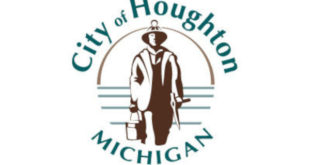We have received the following information from the Western Upper Peninsula District Health Department about drinking water safety. This applies only to those with private wells, and not to those attached to municipal water systems.
Western U.P. Health Department issues the following precautions for well-water users who believe their wells may have been flooded due to the severe storm this morning that resulted in erosion and flooding.
Water from a well that has been flooded should be assumed to be contaminated. Do not use the well water for drinking, cooking, making ice, brushing teeth, or even bathing until you are satisfied that the water is not contaminated. Purchasing bottled water is recommended until corrected.
In order to ensure that the water is safe, the well should be disinfected, then the water should be tested to make sure pathogens have been completely eliminated. If you suspect that your well may be contaminated, contact Western U.P. Health Department for specific advice on disinfecting your well. The suggestions below are intended to supplement flood precautions issued by State and local health authorities. For more information, go to the health department web site at www.westernuphealth.org.
Well and Pump Inspection
– Flood Conditions at the Well – Swiftly moving flood water can carry large debris that could loosen well hardware, dislodge well construction materials or distort casing. Coarse sediment in the flood waters could erode pump components. If the well casing has been submerged in flood waters it is likely that the well water has become contaminated.
– Remember that there is a danger of electrical shock from any electrical device that has been flooded; consult a certified electrician. Rubber boots and gloves are not adequate protection from electric shock.
– Electrical System – After flood waters have receded and the pump and electrical system have dried, do not turn on the equipment until the wiring system has been checked by a qualified electrician, well contractor, or pump contractor. If the pump’s control box was submerged during the flood all electrical components must be dry before electrical service can be restored.
Emergency Disinfection of Wells that Have Been Flooded
Before Disinfection: Check the condition of your well. Make sure there is no exposed or damaged wiring. If you notice any damage, call a professional before the disinfection process.
– Step 1 – Bypass or remove all water treatment devices before starting.
– Step 2 – If your water is muddy or cloudy, run the water from an outside spigot with a hose attached until the water becomes clear and free of sediments.
– Step 3 – Shut the power to the pump off to avoid any possible electrical shock and remove the well cap. Measure the inside diameter of the well casing and use the table below to determine the total amount of household bleach needed. The bleach must be free of additives like “fresh scent,’ algaecides or thickening agents that can chemically contaminate your well.
Well Casing Size – Depth of Well – Bleach required
2 inch – 50 feet – 1 1/3 Cups
3 inch – 50 feet – 3 Cups
4 inch – 50 feet – 1 1/3 Quarts
5 inch – 50 feet – ½ Gallon
6 inch – 50 feet – ¾ Gallon
If the well is less than 50 feet deep, use the amount indicated, but for deeper wells use additional amounts of bleach in proportion to the increased depth.
– Step 4 – Add the total bleach required to 5 gallons of water in a clean bucket and slowly pour the bleach mixture in to the well casing.
– Step 5 – After the bleach has been added, run water from an outside hose into the well casing until you smell chlorine coming from the hose. Then turn off the outside hose.
– Step 6 – Turn on all cold water faucets in the home starting closest to the well, allow water to run until chlorine odor is detected and then turnoff the faucet. Continue the same process for the hot water supply.
– Step 7 – Wait 6 to 24 hours before turning the faucets back on. It is important not to drink, cook, bathe or wash with this water during the time period as it contains high amounts of chlorine.
– Step 8 – Once the waiting period is up, turn on an outside spigot with hose attached and run the water into a safe area where it will not disturb plants, lakes, streams or septic tanks. Run the water until there is no longer a chlorine odor. Once no odor is detected open all faucets to flush the homes internal plumbing.
– Step 9 – Once you are convinced there is no longer bleach in the system you can collect a sample for bacteria testing, bottles are available at all Health Department offices. Collect the sample from a suitable tap as close to the well as possible, do not test treated water.
– Step 10 – Failure to obtain a safe sample after disinfection should be discussed with the Health Department or a Licensed Well Driller.
 Keweenaw Report Your Source for Local News and Sports
Keweenaw Report Your Source for Local News and Sports





